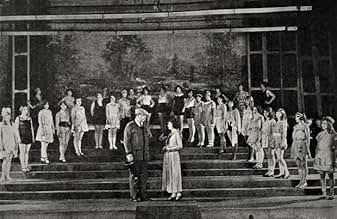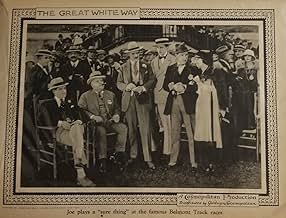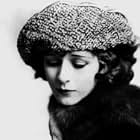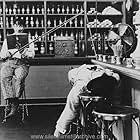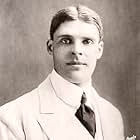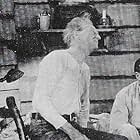The thoroughfare in the title of 'The Great White Way' is, of course, Broadway ... which came into its own in 1904 with the opening of Manhattan's subway system. I was eager to see this film, as it includes brief appearances by several prominent newspapermen and society figures of this period. Among others, we see cartoonists Winsor McCay, George McManus, Billy DeBeck and Harry Hershfield; the latter was at this time author and illustrator of the popular comic strip 'Abie the Agent', but he eventually had a more successful career as a toastmaster. Also seen here are impresario Tex Rickard, journalists Arthur Brisbane and Nell Brinkley, humour columnist Bugs Baer, author Irvin S. Cobb and Damon Runyon. I hope I don't have to tell you who Damon Runyon was.
I viewed an incomplete print of 'The Great White Way' which had some scenes missing. Apparently the movie attempts to tell three different stories, each of which reflects some aspect of Broadway's heartbeat. The first story is about a fire in the theatrical district, the second about a horse race ... held nowhere near Broadway, but involving many Broadway characters as bettors, bookmakers or touts. Most of the missing footage was from these two sequences.
The third sequence is about a prizefighter with dreams of attaining the championship. And here's where things get odd. For one thing, the fighter is merely a welterweight. Except for middleweight Sugar Ray Robinson, it seems to me that American fight fans have never much cared about boxers in the lower weight classes: the heavyweight gets all the attention (and money). So, why is this film about a welterweight?
The next oddity is the casting of that role. The welterweight contender, Joe Cain (great name!), is played by Oscar Shaw. Marx Brothers fans may recall that Oscar Shaw and Mary Eaton played the lovers in 'The Coconuts' ... and were the only film actors ever to get billed above the Marx Brothers! Oscar Shaw was a weedy song-and-dance man, somewhat effete: approximately the American equivalent of Ian Carmichael. Shaw isn't effeminate, but he's not remotely macho, and is a bizarre choice for this role.
Wait: it gets more confusing. The fictional Joe Cain is supposed to have a championship fight with the current title-holder, who has come to New York City for the title bout all the way from England. This character (presumably also fictional) is unnamed in the footage I saw, but he's played by Pete Hartley ... a genuine welterweight contender of this time. The confusion gets in because Hartley shows up on both ends of the cast list. Real-life boxer Pete Hartley appears in this movie as a fictional character, while a burly actor named Jimmy Stone shows up in the same sequences to portray real-life boxer Pete Hartley! Huh? Meanwhile, I couldn't help wondering about that name Jimmy Stone. Two years after this movie was made, Damon Runyon participated in another boxing movie -- 'Oh, Baby!' -- about a fictional pugilist named Jim Stone. Is there some sort of in-joke being perpetrated here?
Whatever the intentions were, when the actors strip off for the boxing match, it's clear that Pete Hartley (the real one) is in much better shape than Oscar Shaw. The actors must struggle ludicrously to create the impression that these two fighters are equally matched.
T. Roy Barnes supplies some inept comedy relief. I doubt that this movie would have made more sense if I'd screened a complete print. As it stands, I'll rate it only one point for coherence, but 5 out of 10 for the rare glimpses of major figures from American journalism.

